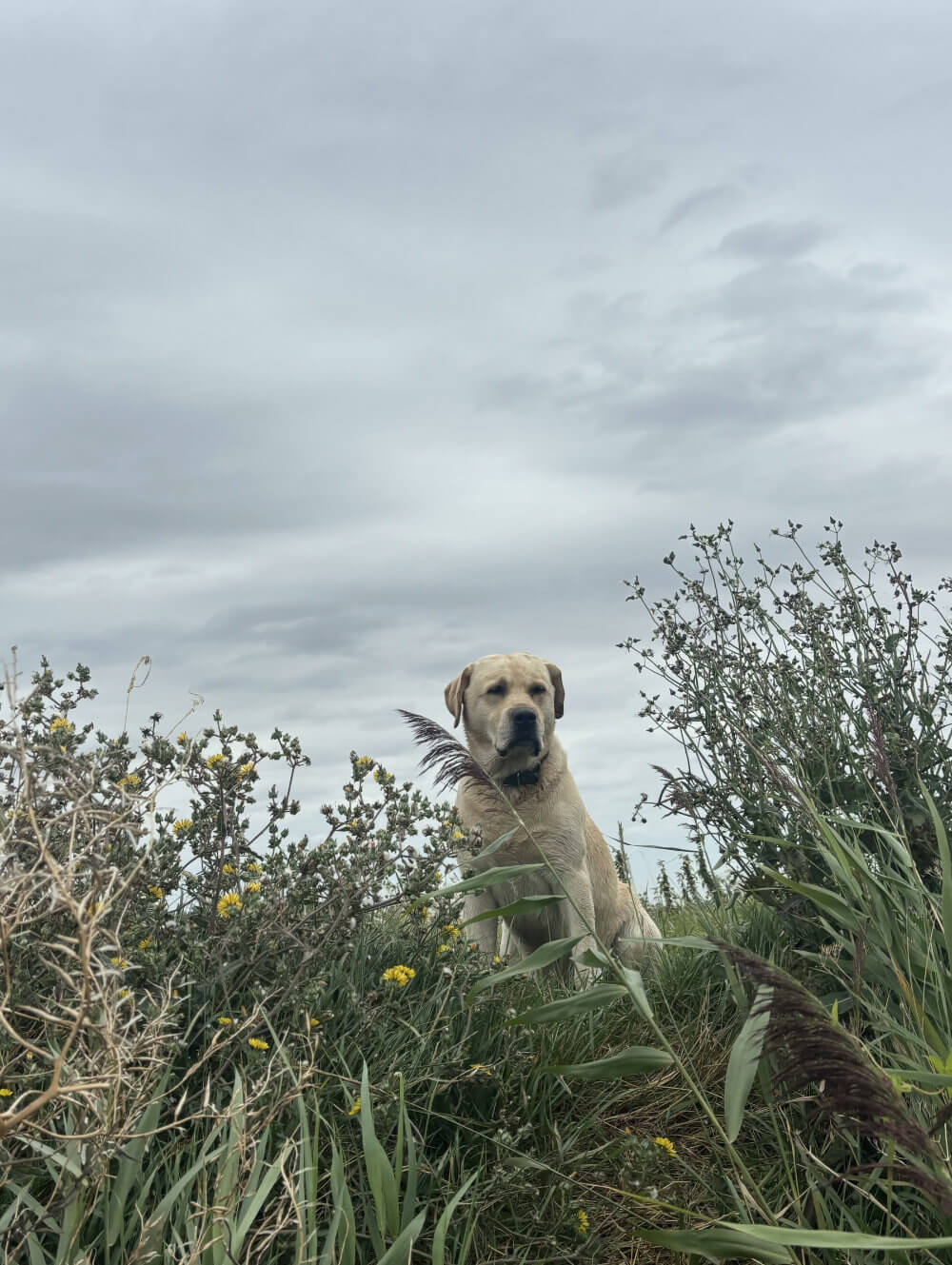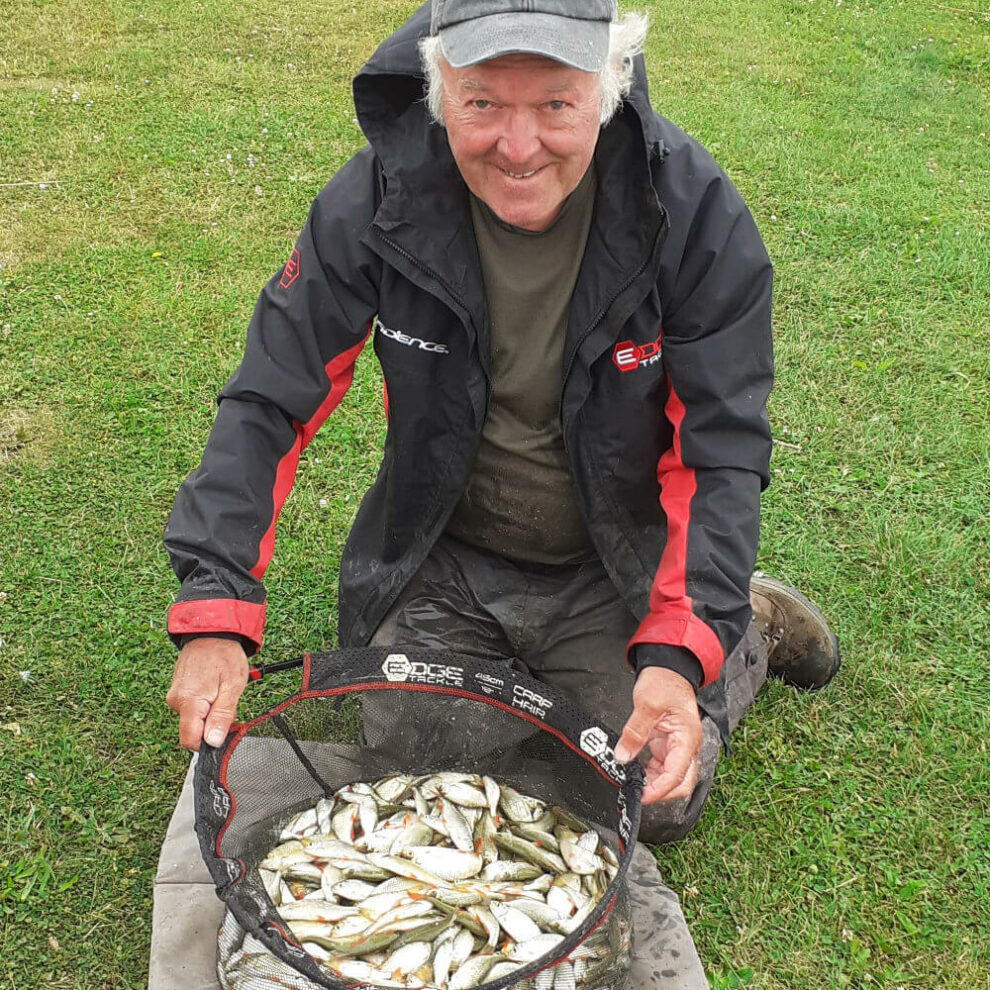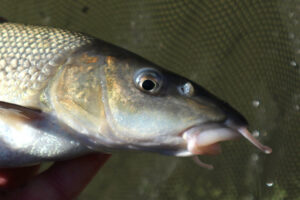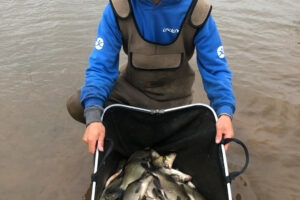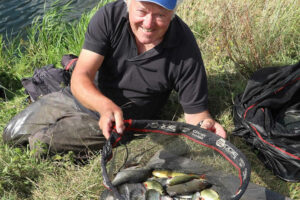Waggler Heaven
This was me last year enjoying some of the best waggler sport I’ve ever known, late autumn as huge shoals of rudd were on the move through the drains, heading towards their winter quarters. There were waves upon waves of this species, with skimmers, roach, bleak, and perch mingling among them. Pike and zander would strike occasionally, scattering fish all over the surface, but there were so many it was possible to keep catching despite any carnage. Hard pellets were the way to go because maggots and casters constantly got shredded to bits by small stuff. Sweetcorn also worked, but being erratic in size it was tricky to feed neatly by catapult. 4 mm hard pellets grouped much better, fired across to the far bank where all the activity was taking place. Being more robust and banded on the hook, rebaiting wasn’t required so often either.
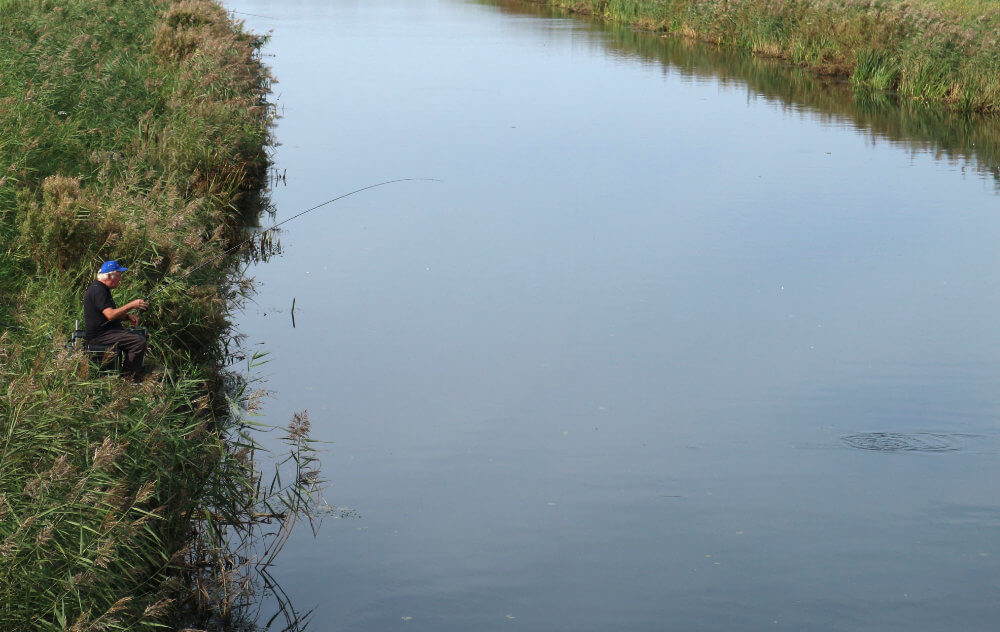
Perfect Combo
Experimenting with different rods, I’ve found the CR10 13ft Match #2 is best for this demanding waggler work. It’s a tad faster on the cast and strike, while retaining a forgiving enough fish playing action. I combine this with one of my favourite CS10 3000 Match Reels, loaded up with Edge 4lb Sinking Mono, while the hook length is normally 0.12 mm or 0.13 mm Premium line. I don’t use ultra-thin tipped canal style floats for this wider type of fen fishing because they are hard to see in changing light conditions and in such breezy places. Old style peacock inserts or clear polycarbonate models like Edge Tackle do are best. A swivel float adaptor lets you change waggler sizes, until the best weight capacity is found to cast the required distance. A perfect loading helps to cast the rig smoothly, rather than having to belt it across and lose direction.
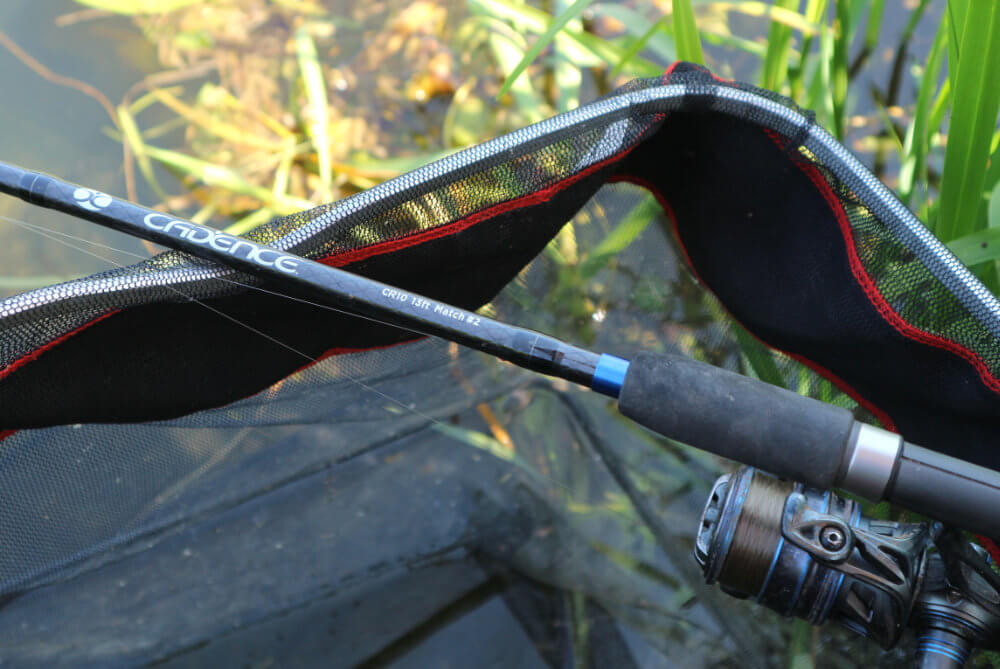
Banding Up
Fen rudd fishing was hectic last year, so I got in the habit of pre-banding enough 4 mm hard hook pellets for each busy session. Otherwise, you can lose your casting and feeding rhythm, which is so important. Fiddling about trying to use a banding tool with wet hands, which often get mucky with slime and groundbait as well, wastes lots of time. I found Mainline Match Activated 4mms were best because they are generally uniform in size and light in colour. Rudd are particularly attracted to bread, and these pellets look very similar when wetted, with their surface turning slightly fluffy. I use a wide gape barbless hook, finding a light pellet design best, threading a banded pellet onto its bend. 4 mm latex bands work well because they don’t grip the bait too tightly, allowing easy movement, which helps prevent bumping off lively fish.
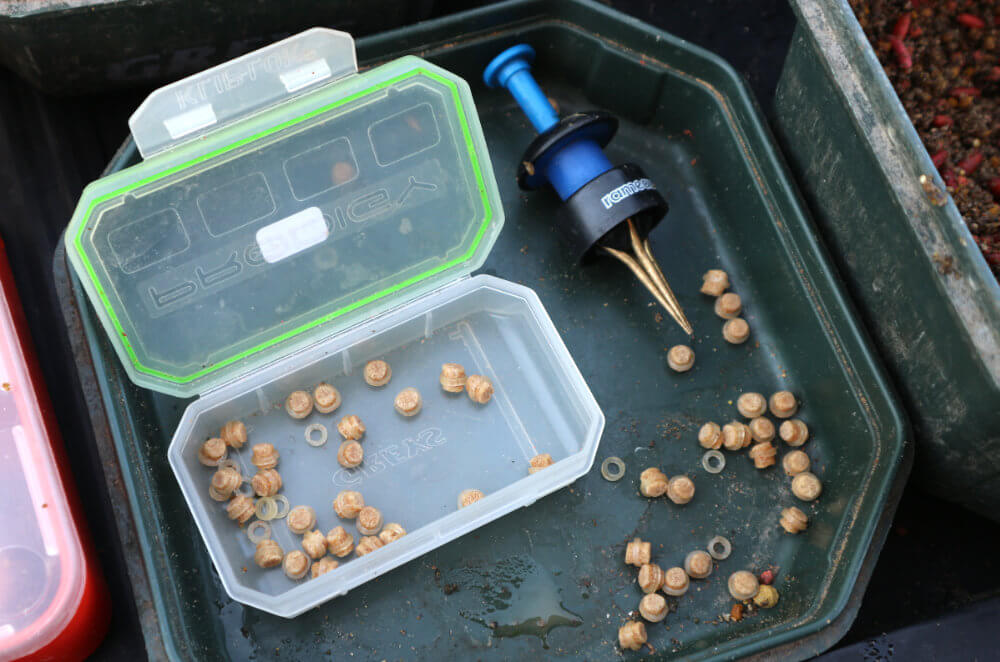
Early Days
It’s less weedy this year, but the water was painfully clear and in the bright conditions it didn’t look favourable. I began my first waggler session feeding casters, which often help to bring swims to life quicker. I was soon getting plenty of bites, finding the tighter I cast the float over to the far side’s weedy margins, the more positive the takes became. The fish were obviously hugging the cover, probably feeling safer from predators, compared to swimming about in the open water. As my regular caster feed stirred things up, bleak became a nuisance, along with tiny rudd and perch. This prompted me to switch to pellets, taking ages to get a response. But gradually, bigger rudd and hand-sized skimmers began to turn up, even surprise roach that don’t normally show this early in the season. Things were starting to look very promising.
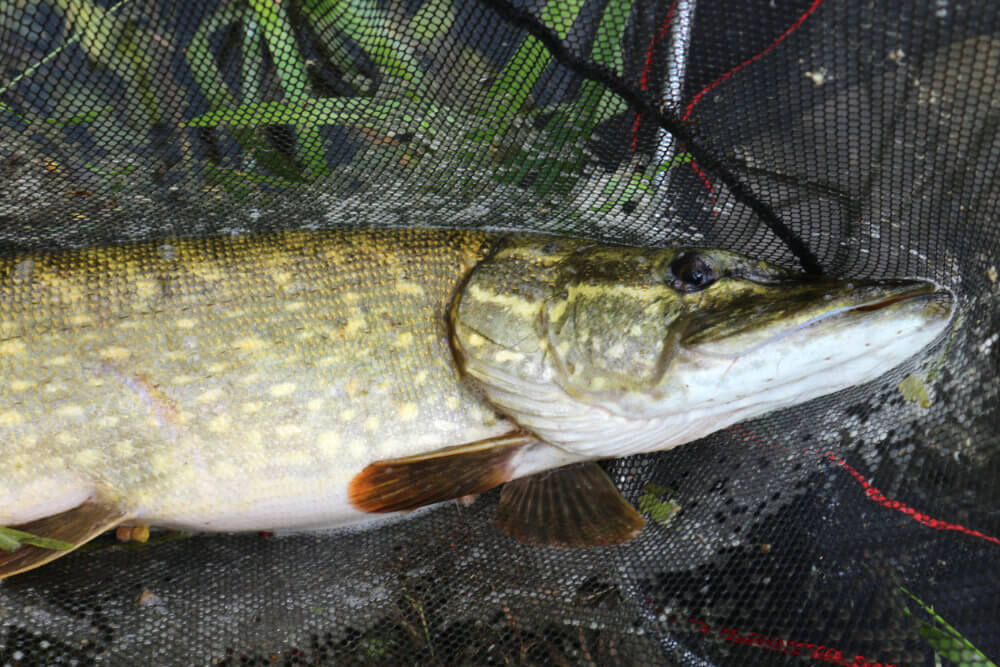
Quiet Spells
Occasionally, bites dried up. I wasn’t sure if it was due to a lack of fish, or the super bright conditions spooking the inhabitants of the swim. I soon got the answer when something that started off small, miraculously gained weight, eventually putting a huge bend in my rod. Several darting runs followed, but whatever had grabbed a skimmer wasn’t about to let it go. I eventually managed to cram this stubborn pike into my landing net, still firmly clamped to its prey. I returned it a few pegs away and the bites came back, before another predator grabbed another small fish. That one was even bigger and spat a rudd out just as I was about to scoop it. After that, a pattern of getting a run of small fish and the odd better one evolved, before something with sharp teeth killed the action again. It seemed the main rudd shoals hadn’t arrived yet.
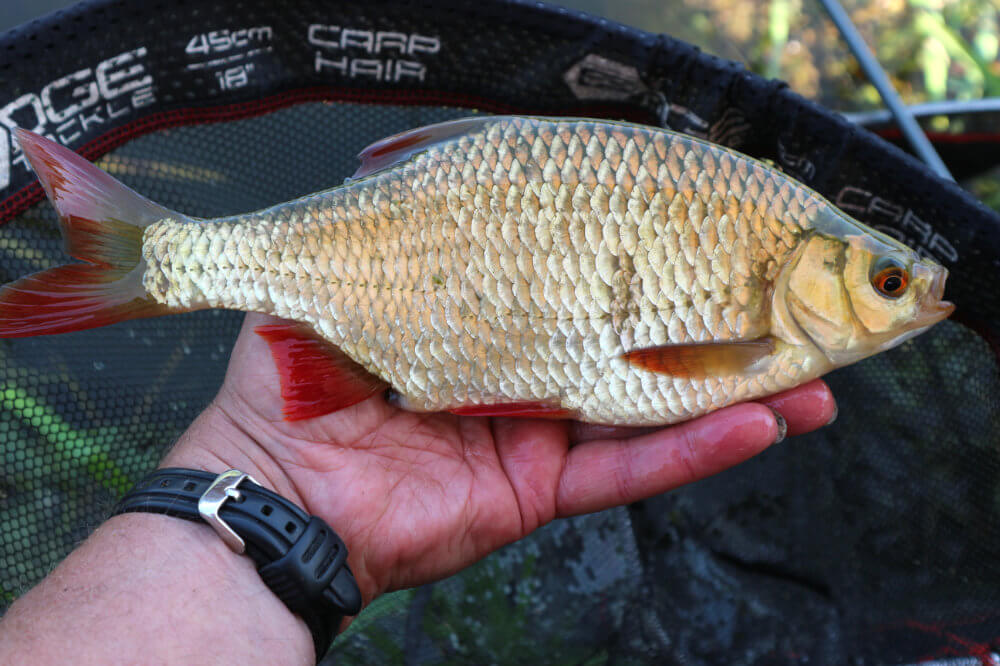
Another Day
What I like most about the fens is you never know what you are going to get. Returning to the same stretch a few days later, under identical conditions, it was about to turn into something completely different. I optimistically set up my CP200 Whip at 6 metres, with a 2gr Edge N6 Pole Float. After plumbing up, I tried running double red maggots through the peg before feeding anything, catching half a dozen surprise perch in as many put ins. Once I started with regular small balls of groundbait, the place came alive with hand-sized skimmers, small rudd and bleak. No predator problems whatsoever, making it seem like another world compared to a few days previously. The more I fed, the more I caught, with better skimmers around the 12oz mark and a few half pound rudd turning up. I used double caster on the hook to beat the bits.
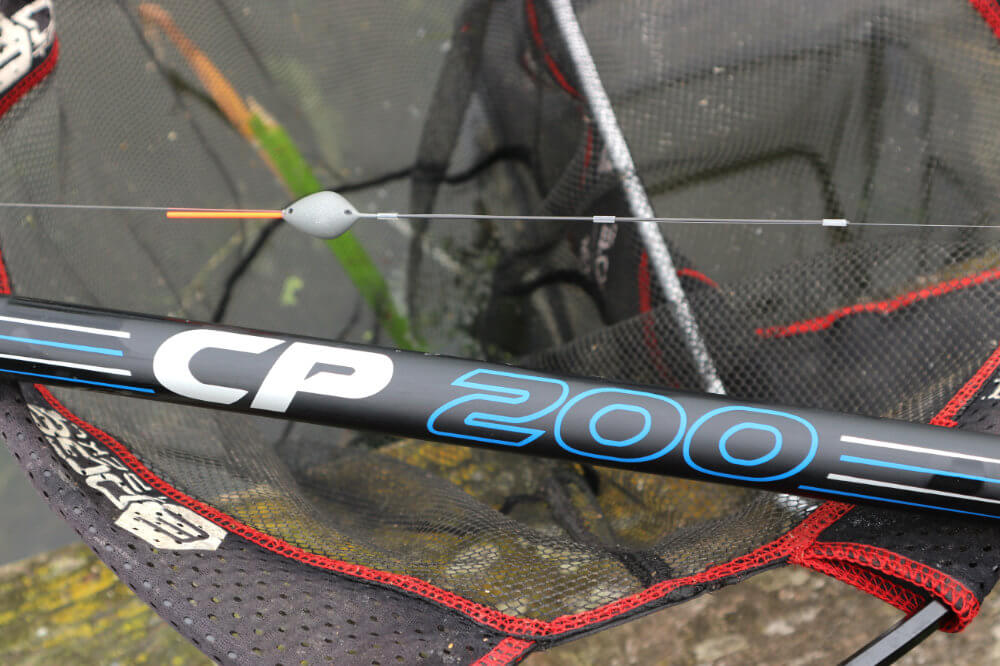
Different Result
I was just thinking proceedings were too good to be true, when I hit into something big, which steamed off just like the pike did on my previous outing. I was expecting the line to get bitten through, but somehow managed to stop the dead weight, keeping steady pressure on it. Very slowly it started to come up, maintaining a constant healthy bend in the whip’s fine carbon flick tip and upper telescopic sections. I’ve landed big fish on whip tackle before on deeper drains, and the secret is not to let them get up a head of steam and charge off. The only way to do this is apply as much pressure as you dare, which is quite considerable when using 0.12 mm or 0.13 mm hook lengths. I eventually caught a glimpse of a big tench, rolling its flank several feet below the surface. Sill giving it no quarter, I somehow managed to net this bonus beauty.
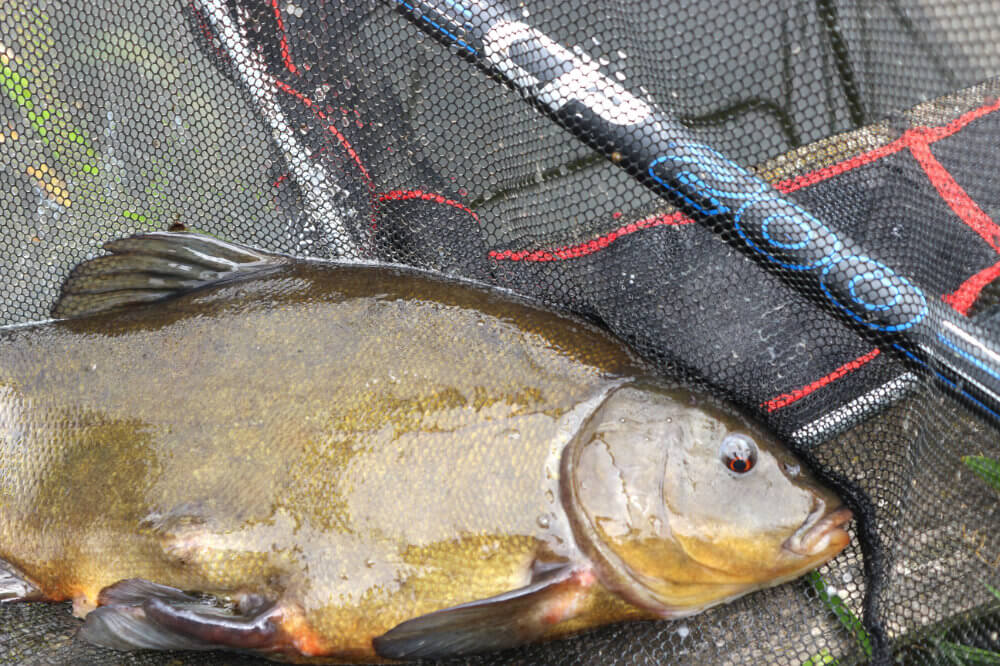
Number Crunching
It’s nice to have a bit of fun occasionally, taking a break from lugging all my gear to far off pegs, instead parking up by one of the grassy swims on the Carp Pool at Manea Fisheries. It wasn’t the carp I was after. Going shallow for the small rudd this lake is heaving with, I’ve managed to break the 800 mark a couple of times. Having watched anglers catching over 1,000 bleak on YouTube videos, fishing in River Wye matches, I wanted to see if I could speed up even more. I set up a couple of match top kits to hand, kitted out with Edge Hybrid Elastic, just in case it was needed with such a big head of carp to contend with. Fishing around 2ft deep in 5ft of water, feeding sloppy groundbait and pinkies, I was soon catching plenty of rudd. They were tiny to begin with, but I dare not up the feed rate, otherwise hungry carp would inevitably move in.
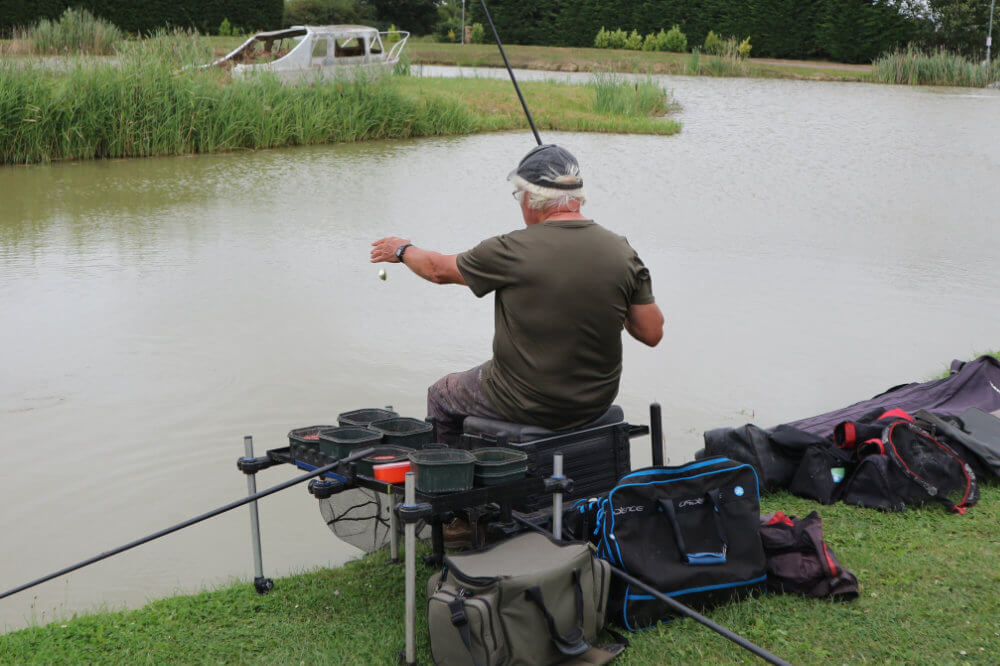
Speeding Up
Many might think it is a daft exercise imitating a windmill, ploughing through a never-ending shoal of small rudd. But I like the way you need to keep your concentration at high levels, constantly seeking little patterns, which help to boost your tally even more. Feeding is so important, introducing just enough to maintain positive bites every chuck, without being too heavy-handed. It’s a fine line keeping small stuff happy, without scattering a shoal with too much grub, or pulling in anything big that might do the same. Pinkie feed was okay, but a big red maggot was better on the hook, getting snaffled almost instantly as it hit the water. A bigger grub lasted longer on the hook as well, catching lots more fish, as many as 7 to 10 before it was mangled to nothing. I kept experimenting with the depth, shot positions and different ways of casting.
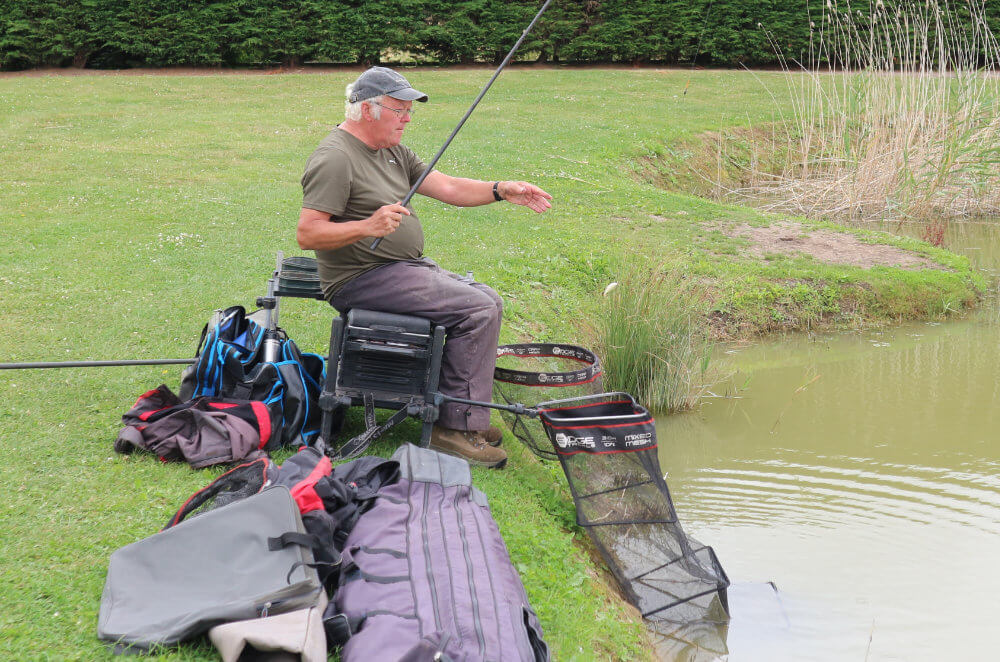
Getting There
It reached a stage where I didn’t have to wait for my pole float to go under because I could see fish swirling and grabbing the hook bait as it hit the surface. This speeded up things even more. I tried feeding casters for a while, to see if they would increase the fish size, but if they did, it was minimal. That was negated by having to rebait more often. I kept track of where I was by putting a pellet into an empty bait tub, every time I hit the hundred mark. It was hard work that left me in even more awe of those match guys I had watched on TV amassing huge hauls of tiny silvers. They have turned it into an art form, a bit like magicians conjuring up something out of a void. I just managed to reach the 10-pellet mark in 5 hours, signalling 1,000 fish were in my keepnet. I experienced a few mishaps along the way, mainly tangles when fish came off unexpectedly.
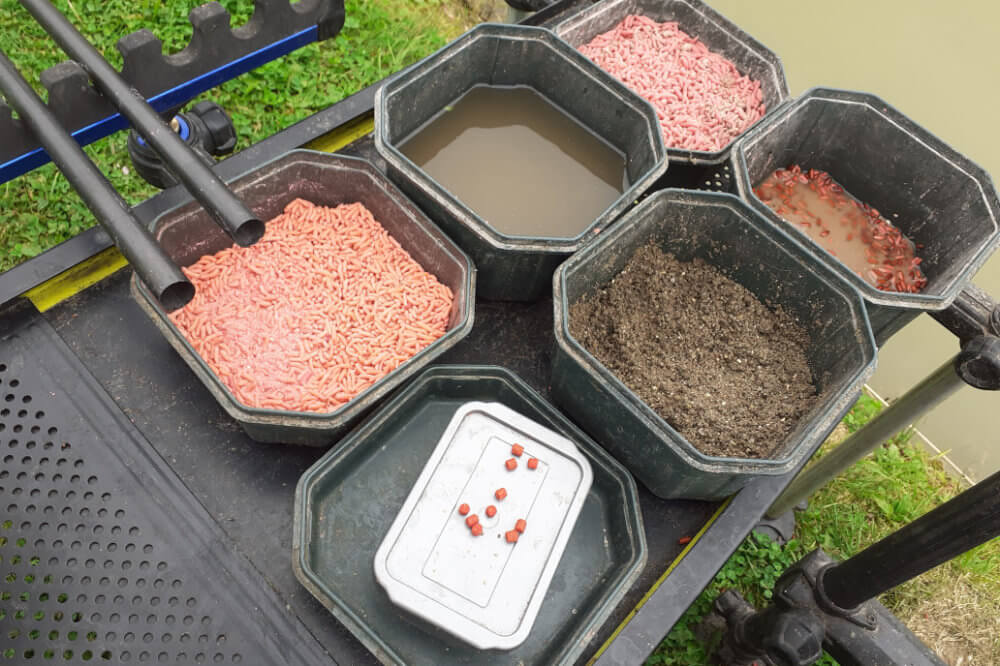
Summing Up
Whatever the size of fish you target, some skill factor is required to be successful. I found this short pole fishing more draining than catching a big haul of bream on the feeder, or bagging hefty carp on a pellet waggler. It really was hard graft, striving to keep the feeding tempo right, also desperately trying to avoid tangles when fish flew off on the way in. I learnt a lot as well, finding slapping a light pole rig on the surface attracted instant bites. Rigs need to be lightweight when presenting them shallow at close range, but also positive enough to propel out in a straight line. River bleak bashers tend to use delicate pencil shaped pole floats with a small bulk close to the hook, but for stillwater rudd I found a heavier carbon stem design with spread shot better. A bit like a mini strung-out stick float rig, which let me see the hook bait being taken.
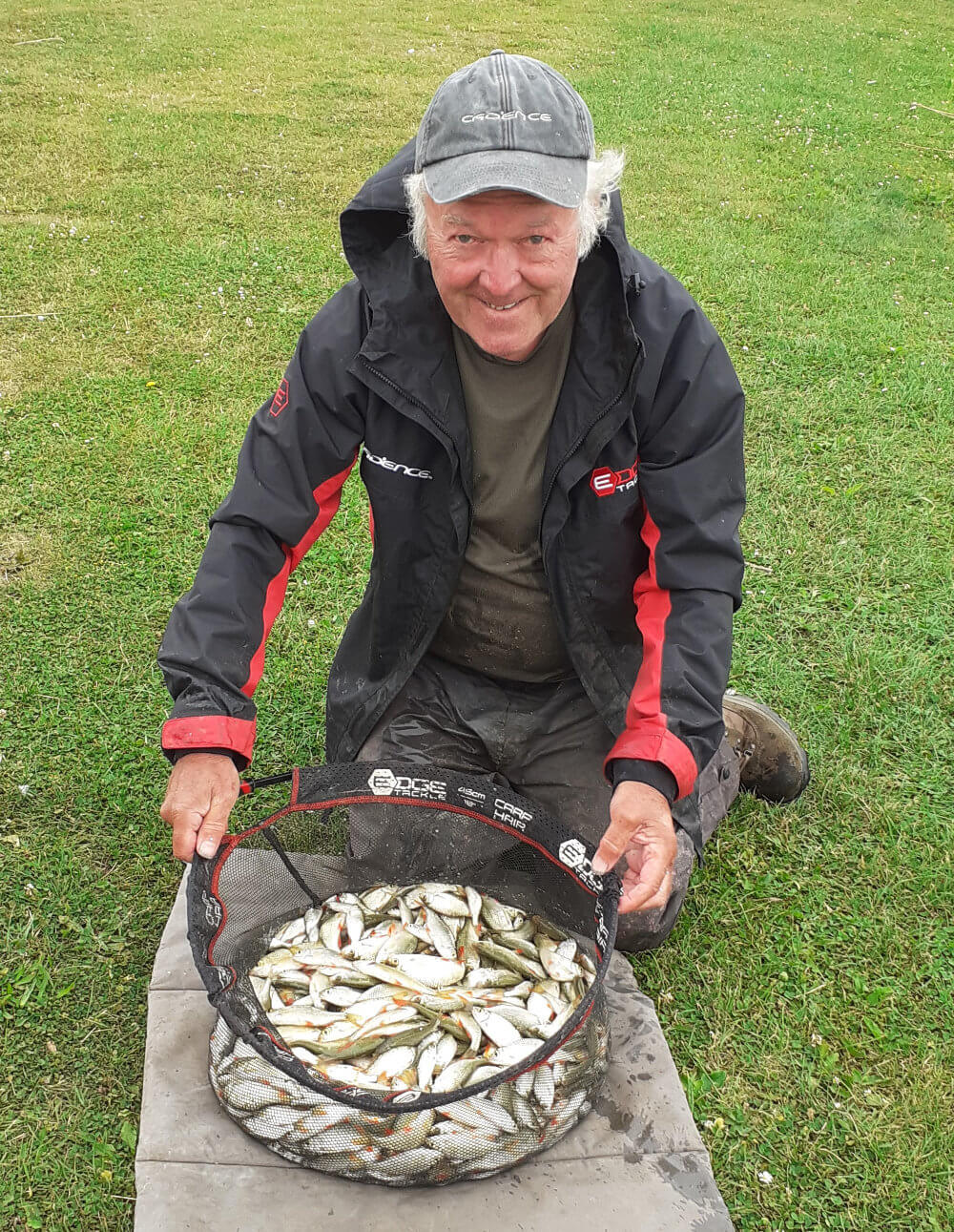
Monty Calling
I was scheduled to meet with famous Cadence star Monty, who is fussy about venues and species. During my last Fishery Focus feature in his company, it quickly became evident when he likes what you are doing. That gets his full attention, but it only stays that way if you visit places and use tactics which interest him. I had an ideal spot and suitable methods in mind, on a club water where it only costs a fiver for a day ticket and not a lot more for a season permit. Although manmade, the waterway has matured into truly wild status. It has well-known areas, connecting with big rivers, along with lesser-known parts where you hardy see another soul. Monty prefers waters that offer a challenge and are available to everyone, especially if they are packed with fish and keep you guessing what might turn up next. That’s for next time.
